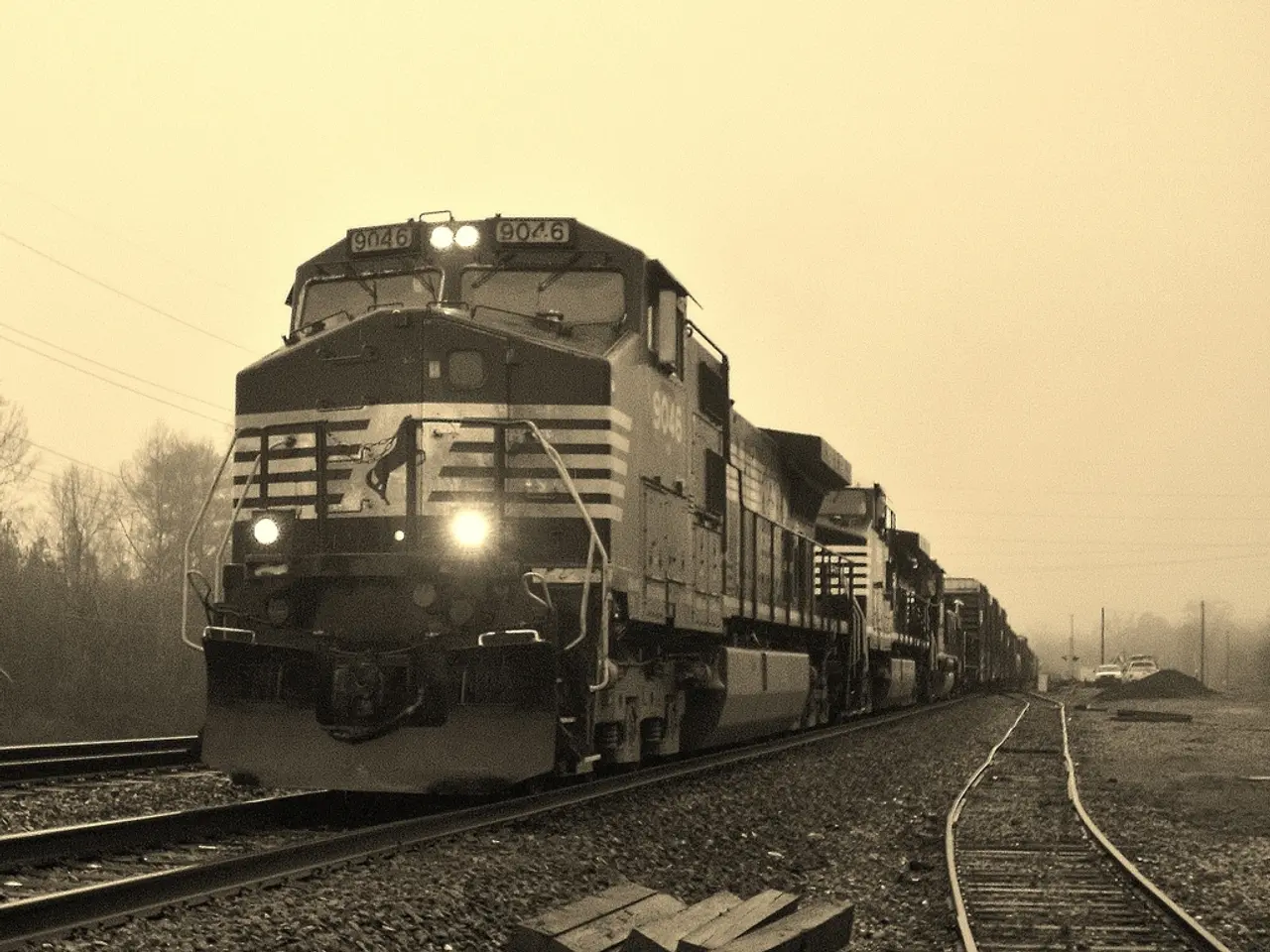Following the rail collision in Riedlingen, scrutiny surrounding North Rhine-Westphalia's (NRW) weather resilience of its rail infrastructure.
Heavy Weather Challenges Germany's Rail Network
Extreme weather events, particularly intense heatwaves, are posing significant challenges to the operation and maintenance of rail tracks in North Rhine-Westphalia (NRW), Germany.
The persistent high temperatures, reaching up to 40°C and beyond, are causing reliability issues for the rail infrastructure, leading to delays, cancellations, and even line closures on affected routes[1][5]. The heat causes rails to expand and potentially buckle, forcing Deutsche Bahn (DB) to impose speed restrictions or close lines temporarily to ensure safety[1][5].
To mitigate these effects, DB and other authorities are implementing several measures. These include lowering speed limits on tracks during heatwaves, intensifying maintenance activities, and conducting increased monitoring of rail expansion and track conditions[1]. Additionally, research and deployment of heat-resistant materials are ongoing to reduce heat vulnerability[2].
In response to the flood disaster in Rhineland-Palatinate, DB has launched a "resilience program" to test the robustness of its infrastructure[6]. The railway company is also employing various technologies for damage assessment, including Georadar and multicopters[7]. In the reconstruction of bridges along the line, structures are designed without central pillars in the riverbed to offer less attack surface in case of potential disasters[8].
One of the most affected lines is the heavily traveled one between Essen and the Rhineland, which has been closed since January 2024 due to a landslide at Ratingen-Hösel[3]. The Bahn plans to secure the slope against heavy rainfall in the future by constructing a nearly 50-meter-long and five-meter-high bored pile wall[4]. Work on the track is still not fully complete, with an expected reopening by the end of the year.
Since June 2025, nearly four years after the disaster, trains are running again between Gerolstein and Cologne[5]. However, Switzerland is considered to be further ahead in terms of preventive measures against the consequences of extreme weather, according to railway expert Niklas Hoth[6].
The flood disaster in Rhineland-Palatinate caused an estimated damage of 1.3 billion euros to DB[9]. The railway company is currently working on renovation plans following a rockfall in the Ratingen-Hösel area[10]. Despite these challenges, DB and other authorities are under pressure to accelerate their mitigation efforts for long-term resilience and service reliability[1][5].
References:
- Deutsche Bahn - Extreme Wetter
- Deutsche Bahn - Hochwasserschutz
- Deutsche Bahn - Erneuerung der Bahnstrecke Essen - Rheinland
- Deutsche Bahn - Landslide in Ratingen-Hösel
- Deutsche Bahn - Bahnstrecke Gerolstein - Köln wieder in Betrieb
- Swiss Railways - Preventive Measures against Extreme Weather
- Deutsche Bahn - Technologies for Damage Assessment
- Deutsche Bahn - Bridge Reconstruction
- Deutsche Bahn - Flood Disaster Damage
- Deutsche Bahn - Renovation Plans following Rockfall
Track maintenance crews may consider utilizing sports equipment of a kind used for treadmill adjustments to account for the rail expansion caused by extreme heat, since this could potentially alleviate the need for temporary closures and speed restrictions on affected routes.
In parallel with developing heat-resistant materials, it could also be beneficial to explore the use of sports surfaces that demonstrate resilience under high temperatures, as these might offer a viable solution for future rail infrastructure construction, helping to ensure superior service reliability and resistances to extreme weather events.






